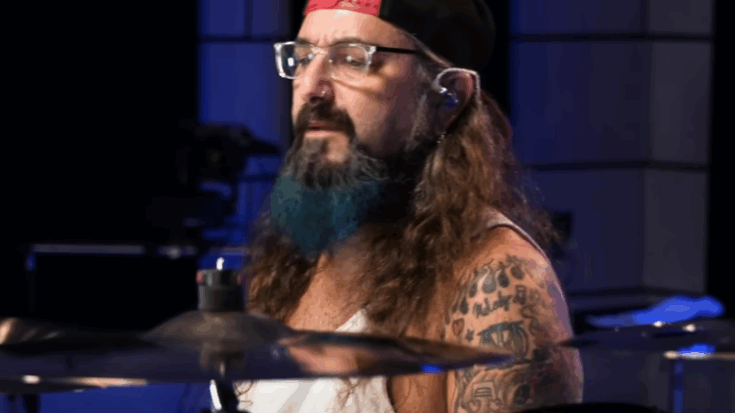Mike Portnoy Admits He’s “Nothing Like Neil Peart” in One Crucial Way

via Drumeo / YouTube
Dream Theater’s Mike Portnoy has never hidden his admiration for Rush’s Neil Peart. The late drummer shaped generations of musicians, including Portnoy himself, who openly credits Peart for influencing his passion for progressive rock. However, in a recent interview with Ultimate Guitar, Portnoy drew a clear line between their styles, admitting there’s one major area where they couldn’t be more different.
Portnoy’s acknowledgment wasn’t a criticism but rather a moment of self-awareness. While both drummers built their careers around technical brilliance, Portnoy revealed that their creative approaches and stage habits come from entirely different philosophies. It’s a contrast that defines why each drummer’s legacy resonates so differently with fans of prog rock and metal.
The conversation offered a rare look into Portnoy’s mindset as both a student and innovator of drumming. He spoke about what he borrowed from Peart’s iconic style—and what he deliberately left behind—to maintain his own musical identity.
View this post on Instagram
Learning from a Legend
Portnoy grew up idolizing Neil Peart, studying his setups, rhythms, and musical storytelling. The Rush drummer’s massive kit and orchestrated drum parts left a lifelong impression on the young Portnoy. “The things I got from Neil were the big, giant drum kit,” he said, recalling how he used to imagine replicating Peart’s intricate setups just from magazine photos.
Beyond the visual spectacle, Portnoy absorbed Peart’s philosophy of making drumming part of the song’s narrative. Each beat, fill, and transition served a purpose beyond rhythm—it helped drive the emotion of the music forward. Portnoy credits this approach as one of the foundations of his own drumming.
Still, he emphasized that admiration doesn’t mean imitation. “All of that aside, I think we’re very, very different players, to be honest,” Portnoy explained. His love for metal and improvisation set him apart from Peart’s structured, composition-based playing.
Consistency vs. Spontaneity
When asked to pinpoint what separates his drumming from Peart’s, Portnoy didn’t hesitate. “Neil was very, very methodical in terms of always playing his drum parts the same consistently every night,” he said. Peart’s ability to deliver near-identical performances show after show became legendary in rock circles.
Portnoy, on the other hand, thrives in unpredictability. “I’m horrible at that,” he admitted with a laugh. For him, music is alive—meant to change, breathe, and reflect the energy of the crowd and moment. “I need to be able to just be in the moment and jam.” That improvisational instinct has become his defining trait on stage.
He summed up the difference best himself: “I bring a little bit more of a looser kind of Lars Ulrich style to my playing. You know, I’m somewhere between Lars and Neil, for better or for worse.” The statement perfectly captures how Portnoy walks the line between structure and freedom, precision and passion.
Honoring Peart While Forging His Own Path
Portnoy’s comments come during a reflective chapter in his career. After rejoining Dream Theater in 2023 following a 13-year absence, he’s once again performing the music that shaped his artistic identity. His return also coincides with the band’s 40th-anniversary tour—an occasion that naturally invites comparisons between past and present.
Over the years, Portnoy’s achievements have extended far beyond Dream Theater. He has won 32 Modern Drummer magazine awards, joined their Hall of Fame at age 37, and built a résumé that includes projects like Transatlantic, The Winery Dogs, and Liquid Tension Experiment. His versatility and relentless creativity have earned him a reputation as one of modern rock’s most dynamic drummers.
Still, the shadow of Neil Peart looms large—and Portnoy wouldn’t have it any other way. His respect for Peart remains unwavering. By acknowledging their differences, Portnoy not only honors his hero but also celebrates what makes each artist’s legacy unique: one’s mastery through consistency, and the other’s brilliance through freedom.











